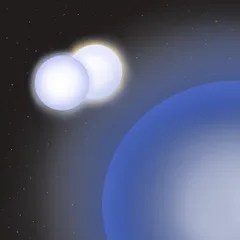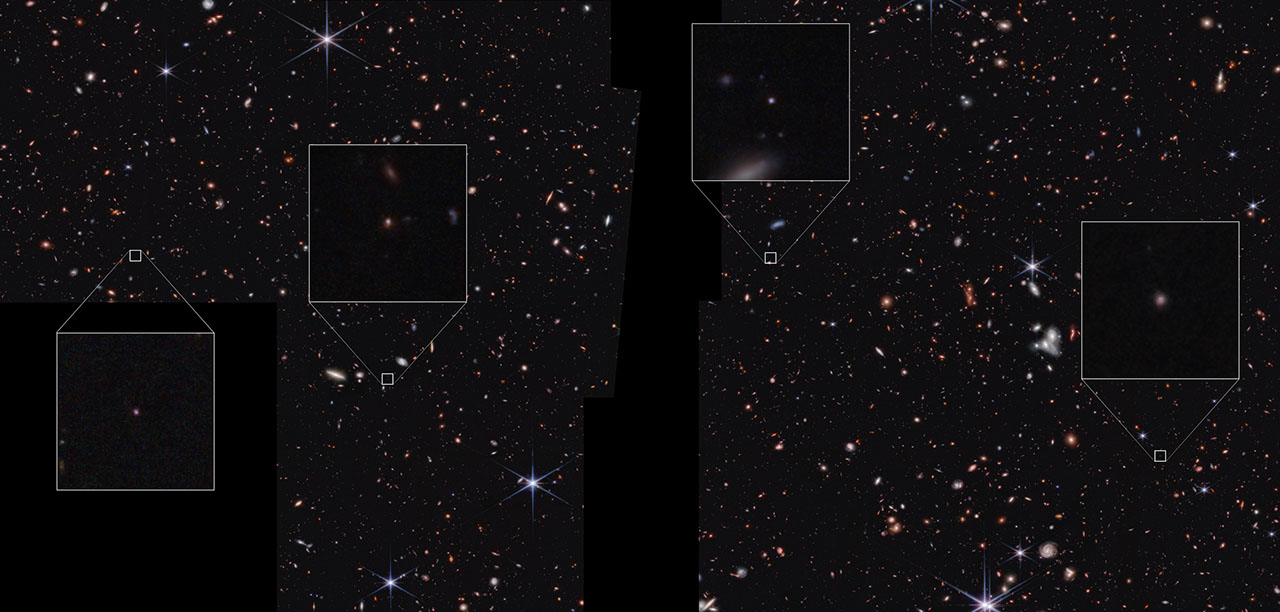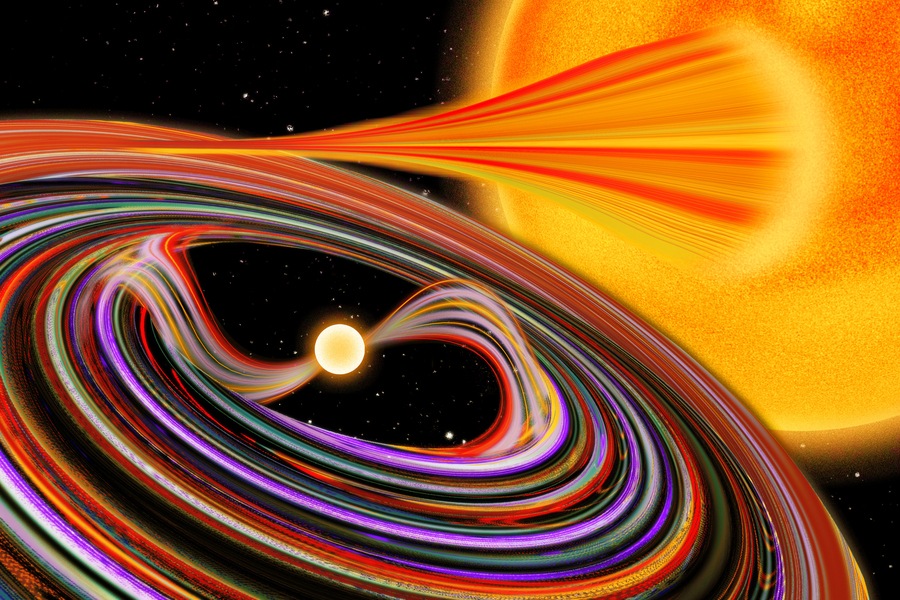The Planet Hunters TESS citizen science project asks volunteers to help discover new planets orbiting other stars. But thirty thousand pairs of eyes searching through the data collected by NASA’s Transiting Exoplanet Survey Satellite (TESS) leads to many exciting discoveries, including discoveries that have nothing to do with planets at all. Now citizen scientists working on the project have discovered a strange lopsided system consisting of three very massive stars orbiting around one another very rapidly---a rare combination that has scientists asking how this system could have formed.
Two of the stars orbit one another in just 1.1 days. The third star goes much more slowly, taking 52 days to orbit around the first two—and this third star has more mass than the other two put together. Did the two stars capture the third? Did all stars form much further out and spiral in towards one another to give us the compact configuration we see now? The future evolution of this system is equally interesting; given the high masses of all three stars, this system will likely end its life with a splash of gravitational waves!
For more information about this puzzling triple of stars, read the Planet Hunters TESS blog. Or join the Planet Hunters TESS project and help find exoplanets and more rare astronomical objects!
NASA’s Citizen Science Program:
Learn about NASA citizen science projects
Follow on Twitter
Follow on Facebook






































